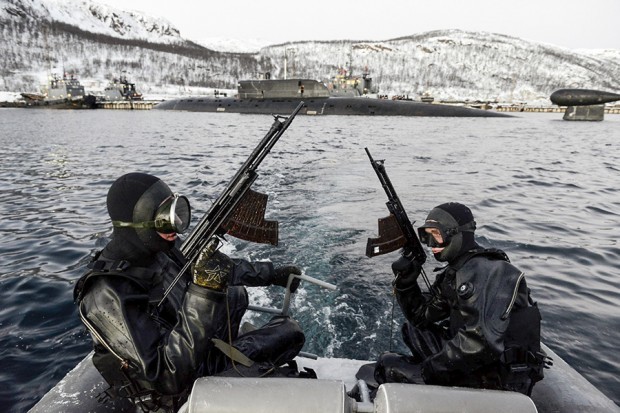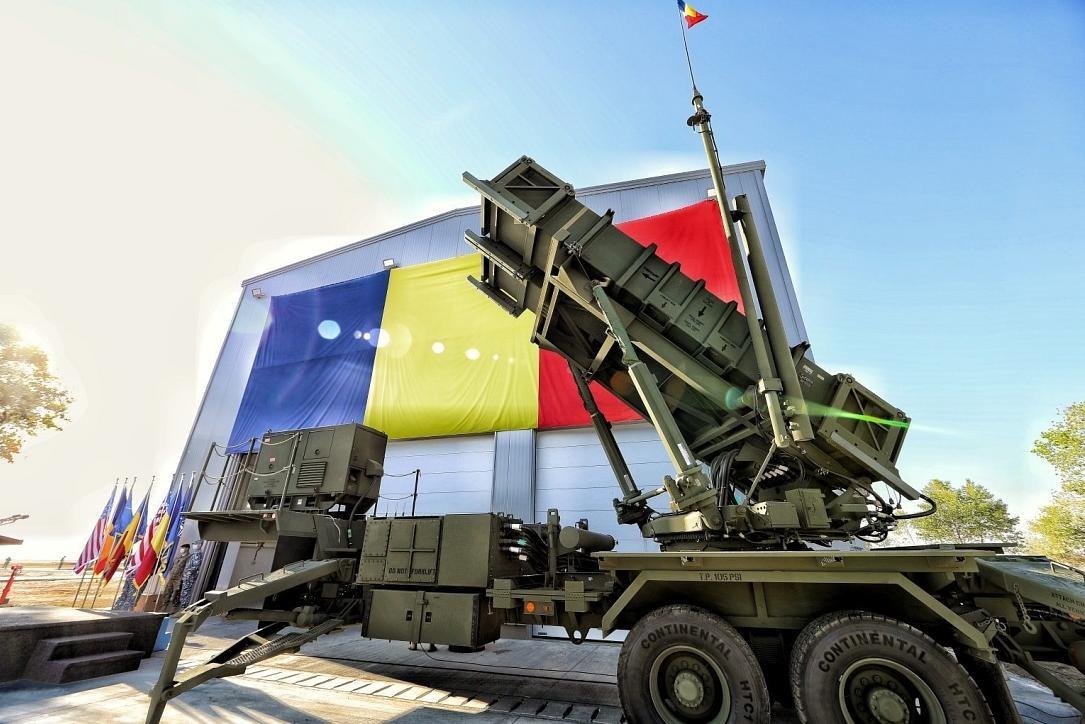
Nord Stream Explosions: Russian Sabotage in the Baltic?
Nord Stream Explosions: Russian Sabotage in the Baltic?
On Monday, September 26, European media reported a significant loss of pressure in the Nord Stream Two pipeline. Shortly thereafter, Swedish Prime Minister Magdalena Andersson reported that a number of explosions had been recorded. Seismologists in Denmark and Sweden confirmed that they had registered the powerful explosions. As the Geological Survey of Denmark and Greenland reported, “The signals are not similar to the signals of earthquakes. They resemble instead the signals usually registered by explosions” (RBC, September 28).
On Wednesday, September 28, gas from the damaged pipes burst out from the 80-meter-deep pipeline, spreading to a diameter of one kilometer in the Baltic Sea. As Danish Defense Minister Morten Bodskov explained, “The explosion was very powerful, so it will take some time before we can go down there to inspect the place.” He added, “This is not a coincidence. Everything was planned, carefully planned.”
While the blasts have compromised both pipelines, Russia had not been pumping virtually any gas through either pipe, as Nord Stream Two was never officially certified by Germany and flows through Nord Stream One had been blocked by the Kremlin in recent weeks. At a meeting of the United Nations Security Council on September 30, Russia characterized any suspicions about its involvement in the accident as “stupid and absurd” (TASS, September 28; Blackseanews.net, September 28).
On September 29, the Swedish Coast Guard discovered a fourth leak. Altogether, two leaks were discovered in Sweden’s exclusive economic zone (EEZ), while the other two happened in Denmark’s EEZ. In response, British defense sources mused, “The acts of sabotage against gas pipelines in the Baltic Sea are believed to have been deliberate attacks using remotely detonated underwater explosive devices.” In truth, mines could have been dropped overboard, lowered on a long rope and placed next to the pipelines by an underwater drone months, or even years, before the explosions (Unian, September 29).
According to one Danish intelligence officer, Russian submarines were also spotted near these areas in late September 2022. Yet, he conceded, “We see them every week. Russian activity in the Baltic Sea has increased in recent years. They check our awareness quite often—both at sea and in the air.” Even so, the sighting raises additional suspicions that Russian saboteurs may have been behind the attacks
Does Russia actually possess the capabilities to carry out such an operation? The answer is a resounding yes. The Kremlin has been preparing for such activities for at least the past 50 years. Any potential Russian intelligence or sabotage operations within the Baltic region enjoys expansive plausible deniability provided by the regular repair and maintenance activities for the Nord Stream pipelines. For an action of this nature, Russian naval special forces from the Baltic Fleet (561st detachment) and hydronauts from the Russian Main Directorate of Deep-Sea Research (or “GUGI”) would be involved (Geostrategy.org.ua, January 2021).
During the final stage of work on Nord Stream Two—from April 10 to August 30, 2021—Russian naval servicemen were reported in the area. The joint special-purpose group was spotted aboard civilian vessels belonging to the Russian Maritime Rescue Services. The members of the joint group were identified as belonging to various special units of the Russian Navy:
- Four from the GUGI, military unit No. 45707 (based in Peterhof);
- Seven from the 313th Special-Purpose Detachment for Combating Underwater Sabotage of the Baltic Fleet (based in the city of Baltiysk);
- Seven from the 342nd Emergency Rescue Detachment of the Baltic Fleet.
Overall, the GUGI is one of the most classified Russian military units and mainly plans and carries out special underwater operations. GUGI hydronauts are engaged in reconnaissance activities: they listen to communication cables, install various equipment and collect wreckages of ships, planes and satellites—both Russian and foreign—to obtain information about the possible level of technological development among adversaries (e.g., North Atlantic Treaty Organization members). The GUGI is also engaged in the planning and preliminary preparation of large-scale sabotage on the transatlantic fiber-optic communication lines between Europe and North America (The Drive, November 11, 2021).
In 2021, a suspicious underwater operation took place in the exclusive maritime economic zones of Denmark and Germany, near the fiber-optic communication lines Baltica (connecting Poland, Sweden and Denmark) and Denmark-Poland 2 (connecting Poland with the island of Bornholm)—within two to three miles of Nord Stream Two. At the time, the newest Russian rescue tug, Bakhtemir, along with a group of divers, mobile rapid deployment diving station and remote-controlled submersible MSS-3000 conducted, over several weeks, numerous underwater activities in the area. Importantly, the Bakhtemir is equipped with manipulators, cable cutters and knives—precisely what would be needed to carry out sabotage operations on the seabed of the shallow Baltic (Zn.ua, October 20, 2021). Ultimately, the actual result of this particular operation is unknown, but consequences of a similar operation now may be quite different, given the current geopolitical circumstances.
In particular, Norwegian infrastructure has been the target of similar operations. In April 2021, bottom sensors of the Lofoten-Vesteralen Ocean Observatory (LoVe), located on the Norwegian Continental Shelf, were deactivated. Besides collecting scientific data, the system was also used to collect data about passing submarines and other underwater objects. Reports indicated that more than 2.5 miles of fiber-optic and electrical cables were severed and then removed. Since then, the missing cables, weighing around 9.5 tons in total, have disappeared (The Drive, November 11, 2021).
Another similar case took place on January 7. An undersea fiber-optic cable located between mainland Norway and the Svalbard archipelago in the Arctic Ocean was knocked offline. The military value of the cable, and moreover that of the Svalbard Satellite Station (SvalSat), point to possible motivations for an espionage or sabotage mission. Although Svalbard itself is a designated demilitarized zone, persistent suggestions—including from Russia—have pushed for SvalSat facilities to be used to download data from military and commercial satellites. Beyond that, the cables lie along a vital passageway for Russian naval vessels, including surface ships and submarines, which use it to proceed from their bases into the Atlantic. Thus, the location of this incident—in the increasingly strategic Arctic region—adds to the suspicion that Russian operatives may have played a role (The Drive, January 10).
These considerations give logic to the plausibility of the involvement of GUGI and other Russian underwater special combat assets in the two mysterious happenings off the coast of Norway, as well as with the Nord Stream explosions. Russia is taking advantage of a moment in which the underwater environment remains open enough for action from any surface vessel or submarine. Furthermore, it is difficult to establish the true extent of such actions, which makes any underwater technology, including sonars, communication cables and power supply, highly vulnerable. Virtually, any littoral country could face the consequences of GUGI underwater operations in its coastal waters, especially if that country has installed high-tech equipment for underwater surveillance, or has become a competitor to Russian energy supplies.
As such, NATO should seek to identify the true origin of the recent Nord Stream explosions and take appropriate action to protect the critical maritime infrastructure of the Baltic’s littoral nations against potential Russian aggression in the future.


